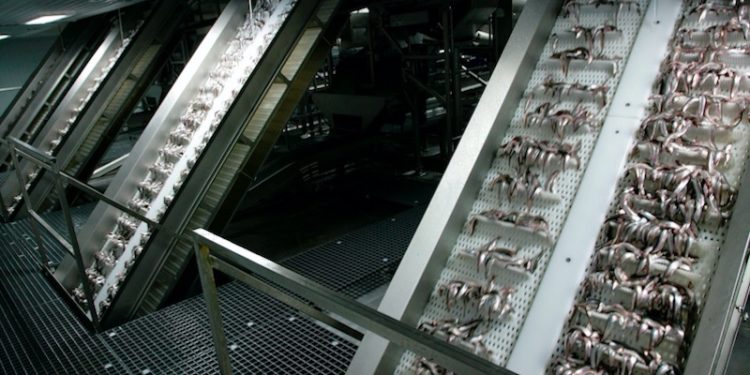Icelandic pelagic skippers are reporting thick concentrations of capelin off the north-east of Iceland, with the fish moving in the usual migration pattern. This could indicate a good season to come, but it depends on the results of the Marine Research Institute’s capelin survey. Initial results could be ready at the end of the week.
The decision on whether or not to increase the initial provisional quota that the season always starts with depends on the survey carried out as the fish begin to migrate, and there’s a great deal riding on the results that the scientists come up with, although the indications are that there is a strong migration already taking place.
Síldarvinnslan’s pelagic vessel Beitir docked in Neskaupstaður at the weekend with 2500 tonnes on board and skipper Tómas Kárason said that season ahead looks promising.
‘We were fishing 68 nautical miles north-east of Norðfjarðarhorn and I have to say the trip went well. We caught our fish in five tows, and each was four hours or less. The last haul was 590 tonnes and we only towed for an hour and a half,’ he said.
‘There’s plenty of capelin to be seen, and the marks are tight. What has changed is that there is fishing day and night, while at the start of the season we were able to catch capelin at night. Now we’re waiting with some excitement for the survey results and they have to increase the quota. The skippers are unanimous that there is a large volume of capelin on the move and it’s over a wide area. The fishing has been on several marks and there’s some distance between them. I’m sure, and I hope, that this will be a good season.’
Albert Sveinsson on HB Grandi’s pelagic vessel Víkingur is also looking forward to the capelin season, and waiting impatiently for the survey results.
‘We finished our last capelin trip with a landing in Vopnafjörður. That was completed before midnight last night. The shoal of capelin we have been fishing recently east of Langanes has moved south from the trawl box and as a result we took a detour for the Marine Research Institute northwards and east of Langanes. After that we started fishing. We must have been 80 to 90 miles off, north-east of Vopnafjörður, and in that area there was a lot of capelin to be seen and we fished well,’ he said.
He said that they expect the capelin survey to be completed this week, so it shouldn’t be long before there are indications of what is likely to happen next.
‘It’s vital that this is done well and done quickly, as the capelin are moving rapidly south from the trawl box. The capelin seem to be following the bank before they go deeper, and that’s the pattern for the usual migration that we know well. The fish should turn up in the shallows off the south-east and the capelin off the north will then follow them,’ he said, making no secret of the fact that the uncertainty is not good.
‘We could switch to fishing blue whiting in the Faroese zone, but that means a trip of at least a week. There is an agreement now on access to Faroese waters, but of course it would be best if there are grounds to increase the capelin quota here so that we can have a real capelin season,’ he said.









